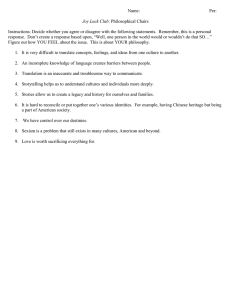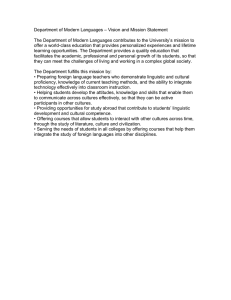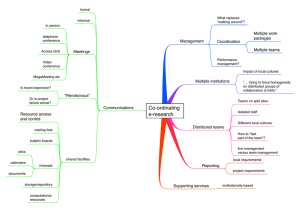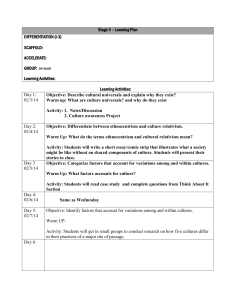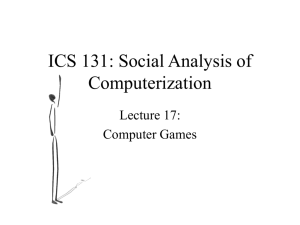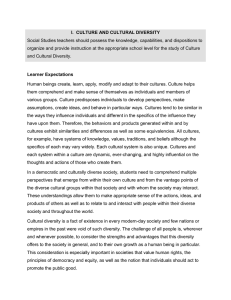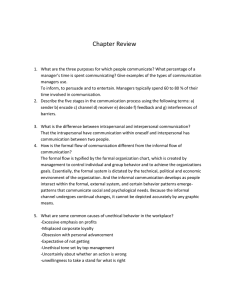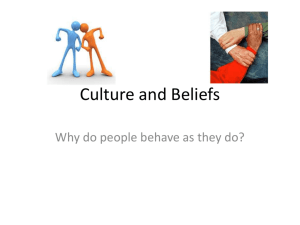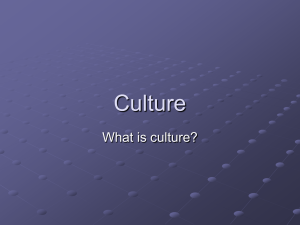CLASS CULTURE
advertisement
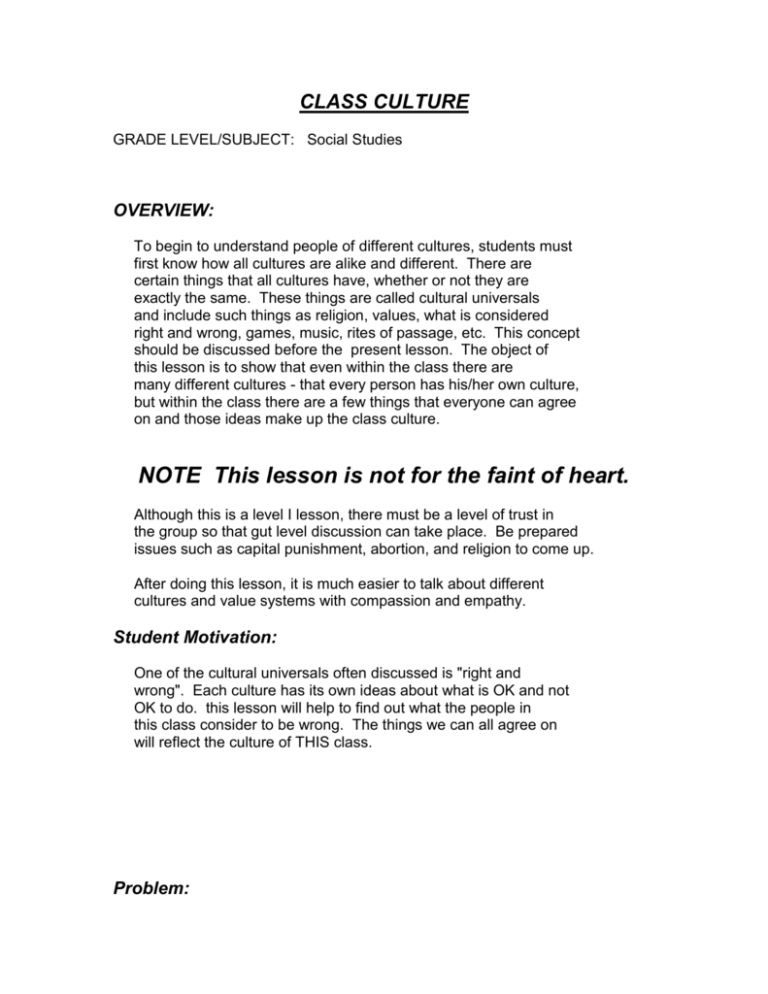
CLASS CULTURE GRADE LEVEL/SUBJECT: Social Studies OVERVIEW: To begin to understand people of different cultures, students must first know how all cultures are alike and different. There are certain things that all cultures have, whether or not they are exactly the same. These things are called cultural universals and include such things as religion, values, what is considered right and wrong, games, music, rites of passage, etc. This concept should be discussed before the present lesson. The object of this lesson is to show that even within the class there are many different cultures - that every person has his/her own culture, but within the class there are a few things that everyone can agree on and those ideas make up the class culture. NOTE This lesson is not for the faint of heart. Although this is a level I lesson, there must be a level of trust in the group so that gut level discussion can take place. Be prepared issues such as capital punishment, abortion, and religion to come up. After doing this lesson, it is much easier to talk about different cultures and value systems with compassion and empathy. Student Motivation: One of the cultural universals often discussed is "right and wrong". Each culture has its own ideas about what is OK and not OK to do. this lesson will help to find out what the people in this class consider to be wrong. The things we can all agree on will reflect the culture of THIS class. Problem: List many, different, and unusual things that you consider to be "wrong", that is, things that are not acceptable to do. ACTIVITIES AND PROCEDURES: Each student first makes a private list of things s/he considers to be "wrong" or unacceptable behavior. After about ten minutes, students get in groups of two or three and share their lists. First, have people determine categories that the ideas fit into. This will determine how many different ideas there are. Then make group lists. In order for an idea to be on the group list, both people in the group must agree to it. At this point the teacher may need to remind people that everyone has his/her own culture that is a result of being raised in his/her family and his/her own ideas, but that what we are after is things everyone in the class can agree on. When the groups of two have a common list, they join another group of two and repeat the process. At the end of this time, all the ideas from each group are written so that everyone can see them. At this point everyone has discussed and defended his/her ideas at least twice. Now, for an idea to be a part of the class culture, everyone in the class has to agree that it is wrong. If there are disagreements, people may make short speeches presenting their ideas and reasons in an attempt to persuade other people of their viewpoint. In the end, the ideas that are left represent the cultural universal of what is unacceptable behavior in this particular class. Evaluation: Many - number of ideas on the original lists Different - number of different categories Unusual- number of ideas that no one else thought of. Extensions: People who feel strongly about an issue may want to prepare to debate it formally, or poll other people, or find out what the courts have to say about it.

